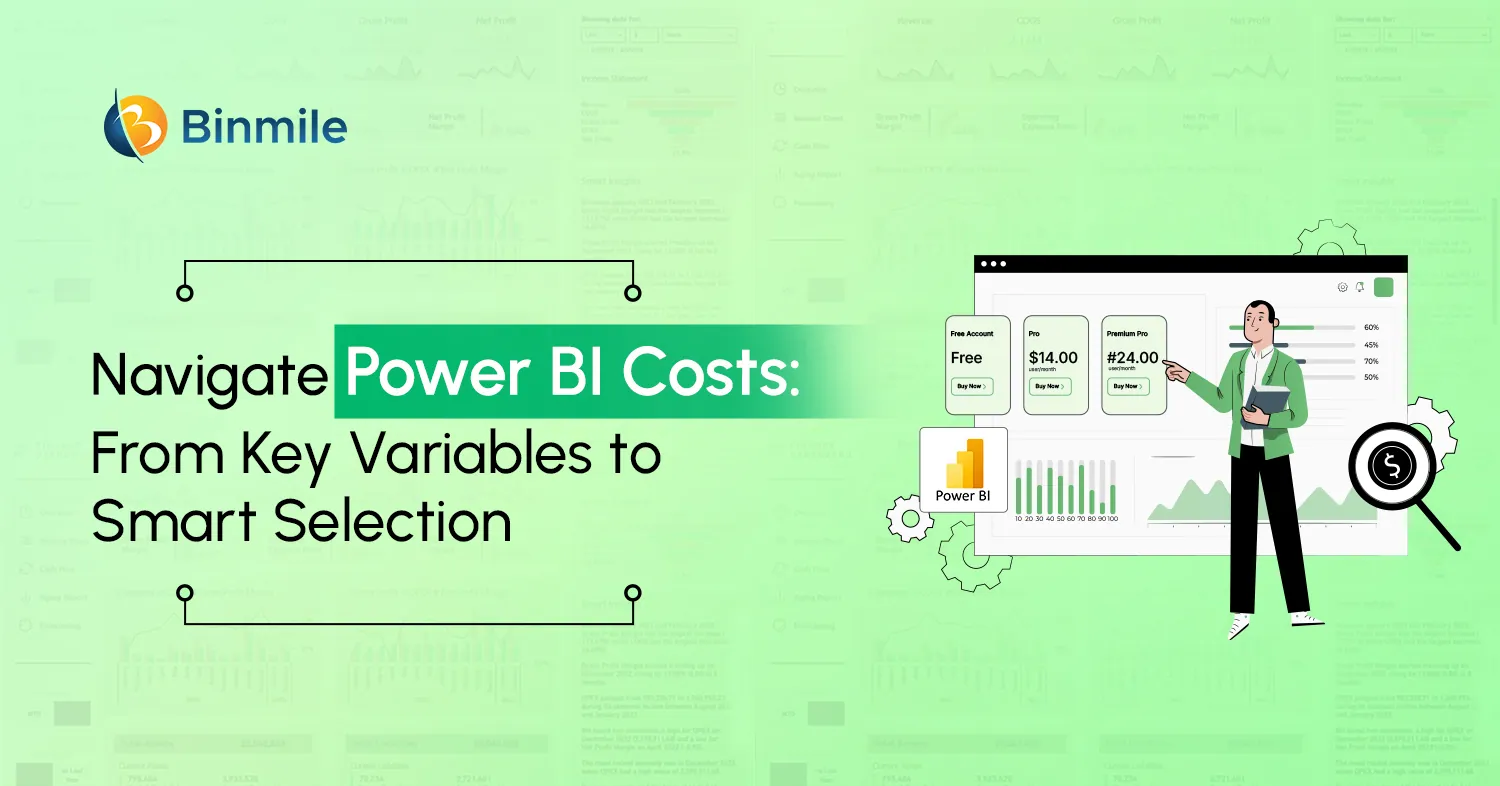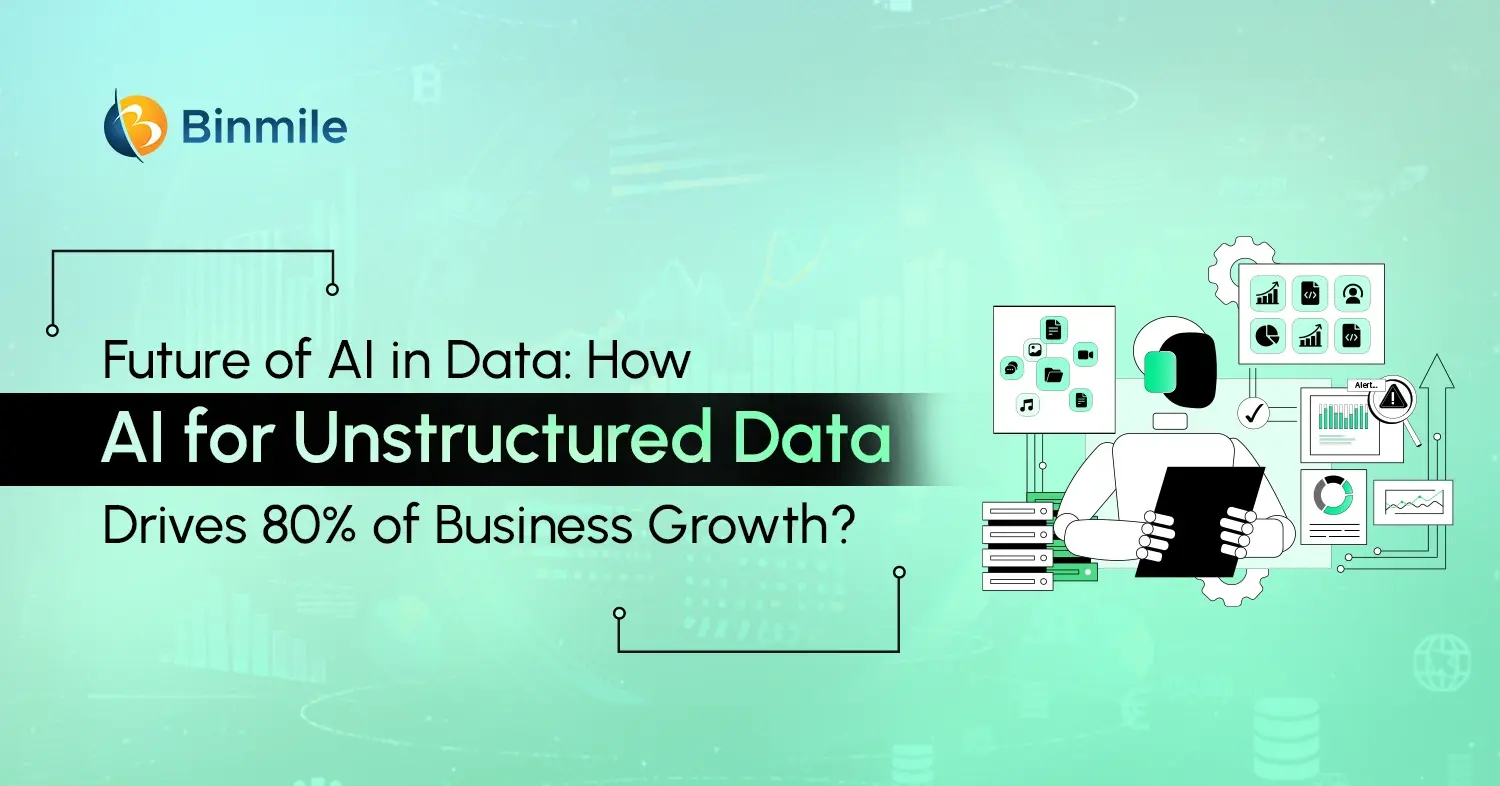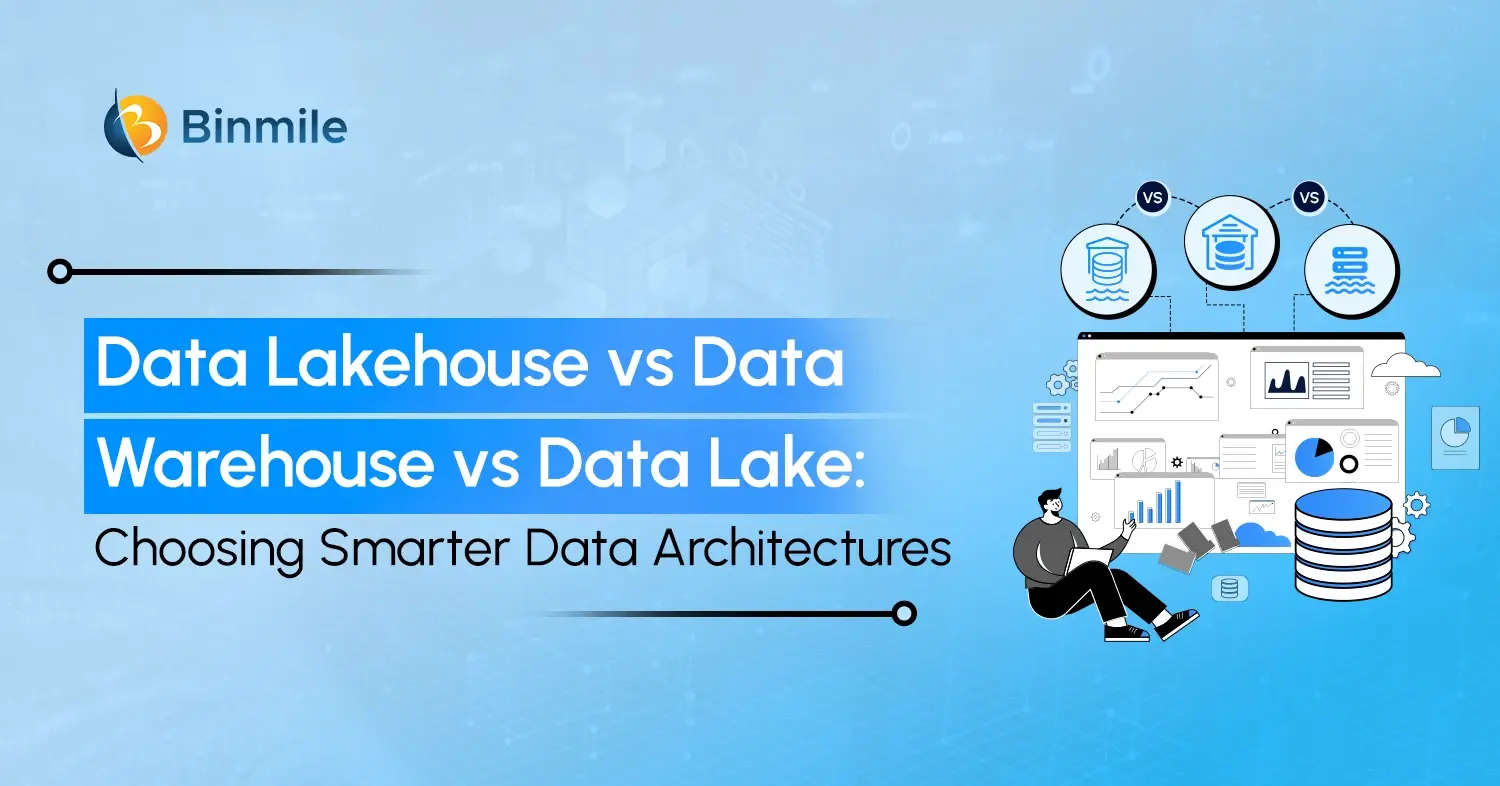Power BI has been a powerful tool for businesses, particularly non-technical business users, to transform disparate data sources into coherent, visually immersive, and interactive insights. It provides them with tools to transform data into coherent, visually immersive, and interactive insights, enabling better decision-making. This is why the Power BI market is expected to grow from $36.82 billion in 2025 to reach $116.25 billion by 2033, with a CAGR of 14.98% during 2025-2033. As companies of all sizes integrate this intelligence platform, understanding the cost of the Power BI structure is crucial to maximizing its value.
Is Power BI free? Yes, and also no. The BI platform offers various pricing structures, and since there are variables such as data refresh rates, user counts, and integration complexity, several factors can influence what you’ll actually pay. Therefore, in this blog, we’ll discuss how much does Power BI costs with different plans. Furthermore, we will break down the key factors driving the cost of Power BI and share tips on how to confidently select the right plan to maximize ROI and avoid budget surprises.
What is Microsoft Power BI?
As a data visualisation platform, Power BI is commonly used for business intelligence purposes. With its capabilities, Power BI enables users to seamlessly connect to their data sources, visualize and identify what’s important, and share that information with anyone or everyone they choose. Additionally, it provides visualization tools in various styles, including graphs, maps, charts, scatter plots, and more.
What are the Advantages of Using Power BI?
- It offers real-time dashboards that provide instant insights for faster decision-making.
- It allows seamless data integration, connecting diverse sources into a unified view.
- AI-powered analytics effortlessly uncover trends and predictive insights.
- Interactive visualizations make complex data easy to explore and understand.
- It provides cloud-based access and ensures secure, anytime-anywhere data availability.
Power BI Free vs. Pro vs. Premium Vs. Embedded: Which is Better for Your Business?
Power BI has become the go-to tool for businesses seeking to transform raw data into actionable insights. However, with four core offerings: Free, Pro, Premium, and Embedded, how do you determine which one best fits your business needs?
1: Power BI Free (Desktop)

It is a local application for individuals who want to explore data and build reports independently. This Power BI Free platform provides robust tools for data modeling and visualization, but lacks collaboration and sharing features.
Key Features:
- Create custom dashboards and reports
- Connect to 70+ data sources (Excel, SQL, etc.)
- Use Power Query and DAX for data modeling
- Export reports to PDF or PowerPoint
- Access to the custom visual marketplace
Best For: Freelancers, students, or analysts working alone on personal or local business projects. Great for individual data exploration or proof-of-concept building.
Cost: Free (no subscription required)
2: Power BI Pro

It is a full-service BI solution designed for collaboration across teams and departments. Power BI Pro allows cloud-based report sharing, co-authoring, app workspaces, and integration with Microsoft 365.
Key Features:
- Share dashboards and collaborate in real-time
- Scheduled data refresh (up to 8 times/day)
- Integration with Excel, Microsoft Teams, and SharePoint
- App Workspaces for team content
- Role-based access and governance features
Best suited for: Small to mid-sized businesses, startup teams, or departments that require regular collaboration, report sharing, and cloud deployment.
Cost: $14.00 per user/month, paid yearly
3: Power BI Premium

Power BI Premium offers enterprise-grade capabilities including AI tools, paginated reports, and dedicated cloud capacity. It supports organization-wide usage, high-volume data, and broader distribution without needing individual Pro licenses for report viewers.
Key Features:
- Dedicated capacity in the Microsoft cloud
- Advanced AI (AutoML, cognitive services)
- Paginated reports + Big data support
- 48x/day data refresh for critical datasets
- Share content with free users via Premium workspaces
Best For: Large enterprises, data-heavy organizations, or regulated sectors (finance, healthcare) requiring scalability, high performance, and advanced analytics.
Cost:
- Premium Per User (PPU): ~$24 user/month, paid yearly
- Premium Per Capacity: ~$4,995 user/month, paid yearly
4: Power BI Embedded

It is a Microsoft Azure service that enables developers to embed interactive Power BI reports and dashboards into their own applications or websites. It’s designed for ISVs (Independent Software Vendors) and developers who want to offer analytics to their customers without requiring those users to have a Power BI account.
Key Features:
- Embed fully interactive dashboards into custom apps
- Control user experience (branding, UI, access)
- No Power BI Pro license required for end users
- Scalable Azure-based capacity with pay-as-you-go pricing
- Supports row-level security and custom authentication
Best for: Software companies, SaaS platforms, or customer-facing portals that want to offer built-in analytics without requiring users to access the Power BI service or purchase Microsoft licenses.
Cost:
- Power BI Embedded is billed through Microsoft Azure based on capacity usage (per hour), not per user.
- Starts at A1 tier: $735.913/month
- Scales up to larger SKUs (A2–A8 and higher) for more capacity
How Much Does Power BI Cost: 7 Key Considerations to Know

1. User Type and License
Different types of users, such as Viewer, Analyst, or Administrator, are required to choose one of three license types: Free, Pro, or Premium. More elaborate functions require licensed usage, and it comes at an expense, directly influencing the total cost of implementation and maintenance.
2. Data Volume and Storage
Large datasets require higher storage and processing capabilities. Free and Pro accounts have limited capacity, while Premium offers expanded limits at a higher price, making data volume a key factor in overall cost planning.
3. Data Refresh Frequency
It refers to how often the data is updated, with Pro licenses allowing up to 8 data refreshes per day, while Premium licenses allow 48. Therefore, businesses that require real-time or frequent updates may opt for Premium, which increases licensing costs and infrastructure demands.
4. Deployment Scale
The cost of Power BI is also decided by the price per user and workspace. For instance, Pro has a limited deployment scale, and a small team can work on it. But to have a scale of enterprise-wide deployment, it may be necessary to obtain Premium capacities or utilize embedded solutions, which substantially increase the cost.
5. Report Performance and Optimization
Inefficiently designed reports, with excessive visuals, unoptimized queries, or complex DAX formulas, can consume more resources, especially in Premium or Embedded plans. Poor optimization leads to slower load times and higher compute costs.
6. Third-Party Integration and Custom Visuals
Integrating with the rest of the toolbox (such as Salesforce, Azure, or SAP) or based on custom visuals may require extending the use of the tool, which can involve more development time or services, thereby increasing the final implementation and operating costs.
7. Support and Training Needs
More advanced features and enterprise deployments may require technical support, consulting, or user training. These costs may be internal or outsourced and can significantly add to the total cost of ownership of Power BI.
How to Choose the Right Plan for Your Power BI Implementation
Selecting the right plan for Power BI is not limited to cost, but also involves other requirements. These are 5 tips that can help you make a choice:

- Evaluate User Requirements: Calculate the number of report creators versus viewers, so that you do not pay for Pro or Premium plans unless Free access is insufficient.
- Data Volume Check: A huge data refresh occurs several times per day, requiring greater capacity. Large data sets are well-suited to Premium plans compared to Free or Pro plans.
- Assess Collaboration Scope: If users need to share dashboards and share across teams, Pro or Premium is necessary. Power BI Free does not come with sharing capabilities.
- Consider Scalability: Expecting growth? Premium or Embedded plans enable users to expand without compromising performance or restricting data usage.
- Auditing Requirements: Industries with strict security or governance needs must opt for Premium to enable stronger compliance, encryption, and dedicated cloud options.
Know the Difference: Power BI vs. Tableau vs. Looker
Closing Remarks on the Cost of Power BI
There is no doubt that Power BI has transformed the way businesses leverage intelligence tools to boost decision-making and knowledge sharing. However, companies must know different pricing structures to understand what suits their data analytics projects best. Whether you’re connecting Power BI to SQL Server or another data source, the decision to use Power BI Pro, Premium, Embedded, or a hybrid approach will depend mostly on your usage and project goals. Please take the time to assess the cost of Power BI available and determine the best fit for your business and its goals. This will help you start lean, grow smart, and make data-driven decisions with confidence, even with limited budget constraints.
For that to happen, you need expert assistance that can accelerate that momentum by helping organizations unlock, share, and scale the full capabilities of Power BI. As an expert in data analytics services, we enable organisations to develop, share, and utilise the full potential of Power BI, allowing them to go from data to sharp insights in record time.
To learn more about what the Microsoft Power Platform can do for you and how to plan your Power BI deployment, connect with us for a free consultation today.









